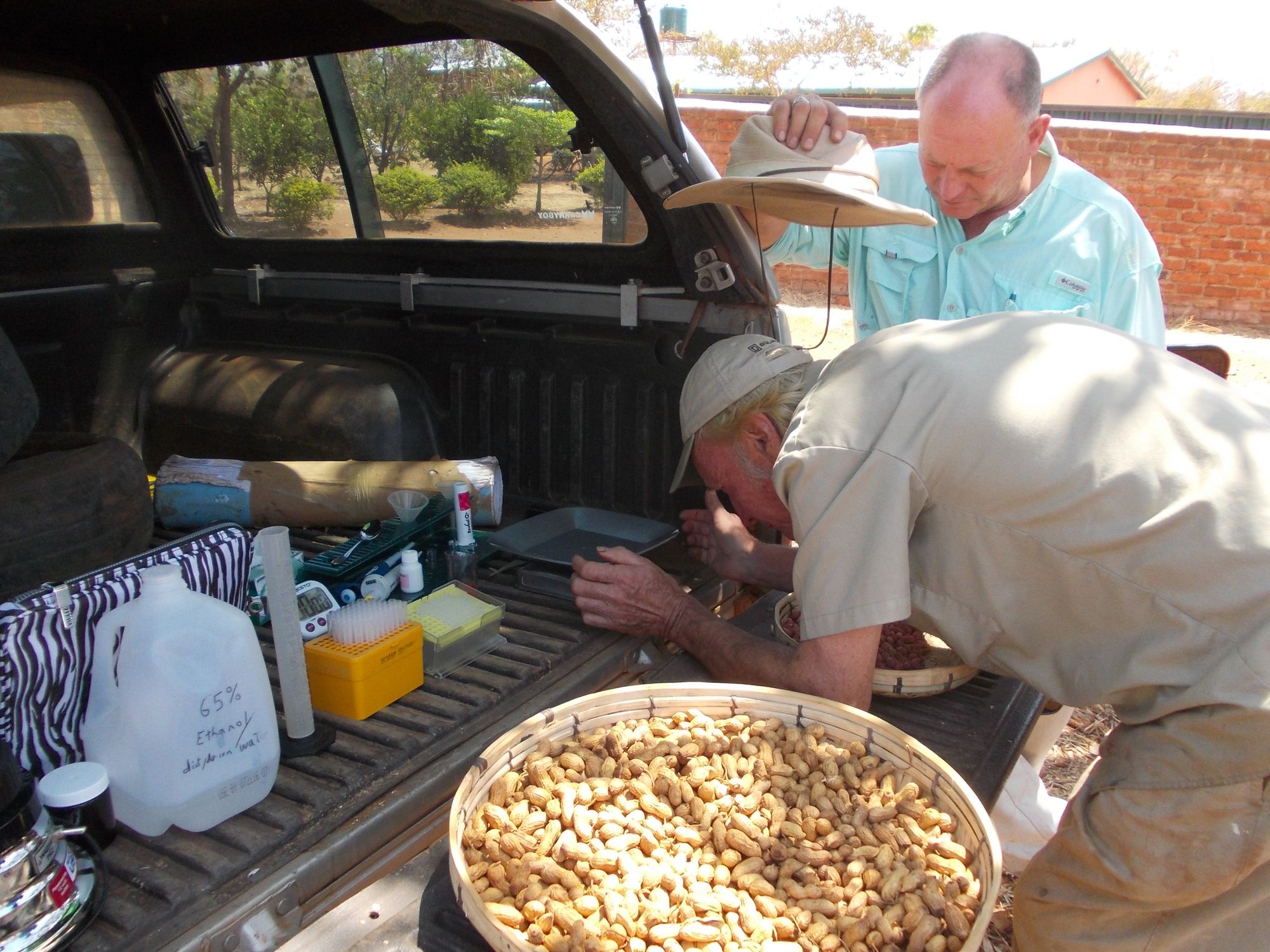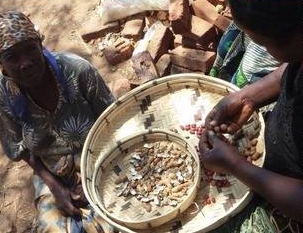
(October 27, 2015)
Explaining an icy and snowy winter to a group of Zambian farmers can take a lot of creativity, and a deft interpreter. But the concept of a dry season, a time when no planting can happen, is a fairly universal concept. Universal concepts are what Farmer-to-Farmer volunteers rely on when sharing their skills.
Recently returned from their Farmer to Farmer assignment in Chipata, Zambia Jock Brandis and Randy Shackelford reflected on the trainings they gave to farmers on reducing aflatoxin levels for peanuts. Together they trained over 380 farmers and technicians on techniques to reduce aflatoxin such as field drying and granary storage cribs.
“I believe that face to face contact is the only effective path to progress… There is no substitute for ‘kicking the dirt’ with the farmers,” said Brandis.
Brandis and Shackelford work for Full Belly Project, a non-profit that creates simple, sustainable agriculture technologies for rural communities. On this trip, they introduced a universal nut sheller, manufactured locally in Zambia. The farming women noted it took them three days to shell a 50kg bag of peanuts. Using the local sourced sheller, they could shell a 50 kg bag in one hour.

Using the first on-the-spot aflatoxin test kit in Africa, Brandis and Shackelford also trained the Zambia Agriculture Laboratory director and technicians on its use. Leaving the mReader with the Msekera Lab in Chipata allows them to test for the toxin in 15 minutes, compared to sending off samples to the national bureau in Lusaka (the Zambian capital) and waiting 3-4 weeks for results. With a quick turn around, and farmers trained in drying and storage techniques, there is the possibility of developing an “aflatoxin safe certification,” which would re-establish export market viability for Zambian groundnuts. Zambian women shelling peanuts by hand, with the universal nut sheller what used to take 3 days now only takes 1 hour.
“At the end of one training session the women’s group broke out into song. I was told the meaning of the song was ‘We now have knowledge and we must put it to good use and let it not be wasted,” said Shackelford.
Transferring concepts across sectors was also helpful. Many farmers were familiar with breeding livestock, but had not thought it was possible for seeds.
“The greatest interest was in learning how they could select next year’s peanut seeds for better drought resistance. They already knew how to breed for better livestock, so the technique made sense, even if they hadn’t thought of it,” said Brandis.
Farmer-to-Farmer volunteers can help with expertise along the value chain. Brandis and Shackelford worked with peanut farmers as well as testing technicians. And while they were specifically assigned to train on aflatoxin reduction, they were also able to train on some broader concepts and introduce a simple water pump.
NCBA CLUSA implements the Zambia Farmer-to-Farmer program through a Volunteers for Economic Growth (VEGA) Special Program Support Project (SPSP). To learn more about NCBA CLUSA’s Farmer-to-Farmer program and open volunteer positions, click here.


